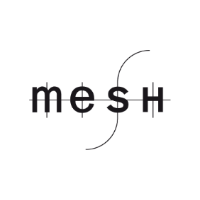Mondays (October 14, 2024 – January 27, 2025) | 12.00 – 13.30
Hörsaalgebäude (105), Hörsaal F
What is sustainability communication? If we look at the website of the University of Cologne (https://portal.uni-koeln.de/universitaet/universitaet-auf-einen-blick/nachhaltigkeit), we get an impression of what our university understands by sustainability communication, what topics, actions, linguistic practices and strategies are associated with it. For companies, NGOs and public institutions, the area of “sustainability” is now an indispensable part of corporate communication and is interwoven with various organisational areas. Since the emergence of sustainability reports as a text type in the 1990s, the guidelines have also become increasingly differentiated in order to define the content and form of this text type (see https://www.globalreporting.org/). Nevertheless, the transition between the communicative practices of “reporting” and “advertising” appears to be blurred in many branches. Subsequently, questions about authenticity, credibility and evidential value arise - and thus about rhetorical strategies and the functions of linguistic/multimodal resources.
Recently, social media has become a popular channel for corporate sustainability communication. There, private and activist sustainability communication is also evolving and establishing entire communities or discourses. Further lines are blurring here: between public and private communication.
In linguistics, we not only examine linguistic phenomena on different levels, but can also analyse language use in order to work out culturally embedded patterns of linguistic action. The multimodal text- and discourse analysis of public communication concerning “sustainability” or “climate change” has become a typical cultural and sociolinguistic method for researching social negotiations, controversies and current controversial topics and their development from a linguistic perspective. Usually, we examine text corpora or collections of multimodal ensembles as parts of a larger discourse. In this course, we will take a look at social media contributions, advertising, corporate sustainability communication and much more. Depending on the linguistic interest, semantic, pragmatic or cross-cutting analysis foci can be set, such as multimodal image-text analyses or analyses of rhetorical strategies.
Procedure:
As a first task, we will learn about sociolinguistic methods for analysing advertising and sustainability communication as well as multimodal digital communication (especially social media). Following this, we will assemble groups and conduct small projects under professional supervision. We will learn to summarise our projects in scientific abstracts (by approx. mid-December). Finally, we will create a scientific poster, which will be presented in English at the international conference "18th HEE Winter Meeting" (probably Fri/Sat 17/18 January 2025). The abstracts will be listed in the abstract book of the journal Health, Environment, and Education, the posters will be available on the website of the MESH Research Hub in the longer term. (Students studying a module with a written assessment will reflect scientifically on their project results and the methods used in a take-home exam or essay (time frame tba)).
Objectives:
Through its innovative and research-oriented concept, this class is intended to provide an initial insight into academic linguistic and interdisciplinary work. It is designed to provide students with the opportunity to discuss texts/text types used in public communication. We will learn to write (different) types of academic texts (abstract, poster/lecture) and practice to present and discuss academic results to and with an international audience in a manner appropriate to the target audience.
Further information for students of the University of Cologne: Klips
